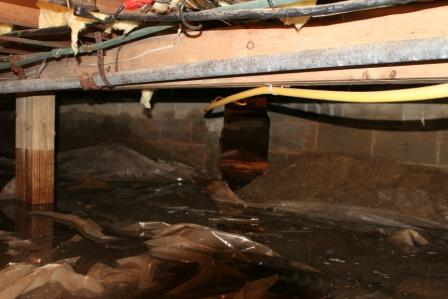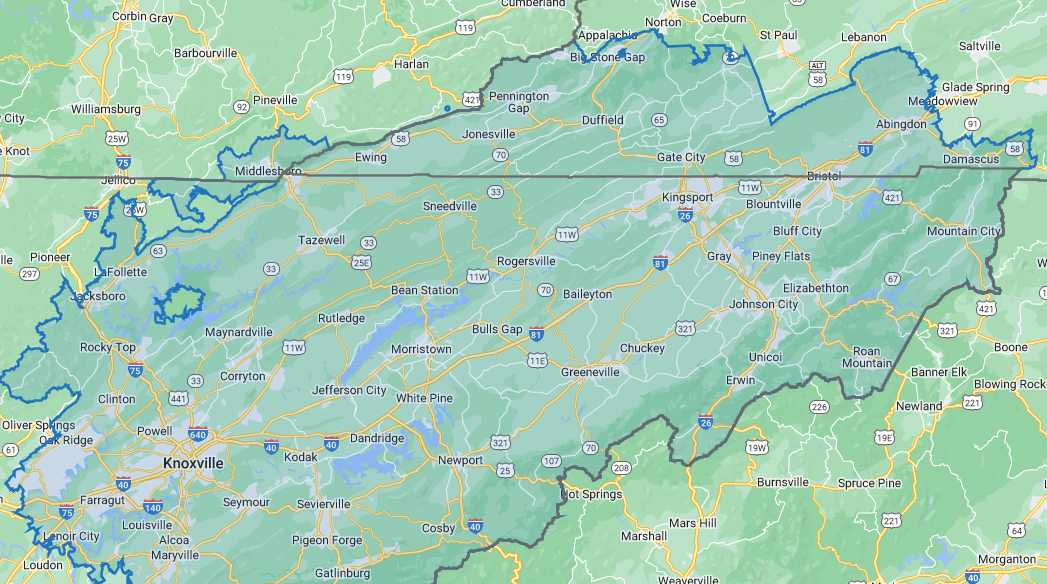The cost of crawl space encapsulation can vary based on several things:
- Size of Crawl Space: If your crawl space is bigger, it’ll generally be a greater cost by size to encapsulate.
- Crawl Space Condition: If your crawl space needs repairs or has existing moisture problems, fixing these issues will add to the cost.
- Materials: The type and quality of materials used make a difference. Better materials might cost more at first but offer better protection in the long run.
- Labor Costs: How much you pay for labor depends on where you live and how tricky the job is. Hard-to-reach crawl spaces or those with complex features can increase labor costs.
- Extras: If you want things like a dehumidifier, sump pump, or insulation, that’ll also raise the overall cost.
- Location: Costs can change depending on how expensive it is to live in your area and how much construction work typically costs there.
- Warranty: Companies that give warranties on their work might charge a bit more.
Usually, crawl space encapsulation total cost can be anywhere from $5,000 to $15,000 or even more. To get the most accurate price for your crawl space, it’s best to ask a few different trustworthy contractors for estimates.
What is a crawl space?

Crawl spaces are often the overlooked, dark areas beneath our homes, tucked away beneath the main floor. Yet, neglecting these spaces can lead to significant problems such as mold, damage to the structure, and worse indoor air quality. This is where crawl space encapsulation comes in. In this helpful guide, we’ll explore the cost of crawl space encapsulation in 2023, what is crawl space encapsulation, and whether it’s a smart investment for your home.
What is Crawl Space Encapsulation?
Crawl space encapsulation is a process meant to seal and safeguard the usually ignored and damp zones beneath your home. It involves creating a moisture barrier that wraps around the entire crawl space. This barrier usually consists of different parts, including:
- Vapor Barrier: This is a strong plastic or foil-like material that covers the crawl space’s floor and walls to stop moisture from getting in.
- Sealing Tape: Special tape is used to secure the vapor barrier and seal all the edges, seams, and connections to make sure it’s airtight and waterproof.
- Insulation: Depending on where you live and the local building rules, insulation might be added to control the temperature and make your home more energy efficient.
- Dehumidifier: In some situations, a dehumidifier is put in place to keep the humidity at the right levels, preventing mold and mildew growth.
- Sump Pump: If your crawl space tends to flood, a sump pump might be installed to get rid of extra water.
- Ventilation Control: Encapsulation might include closing up any existing vents to stop outside air and moisture from getting into the crawl space.
Is Crawl Space Encapsulation Really Necessary?
Crawl space encapsulation offers numerous benefits:
- Moisture Control: It prevents moisture from seeping into your crawl space, reducing the risk of mold and structural damage.
- Improved Indoor Air Quality: Encapsulation can help keep the air in your home cleaner by preventing the entry of allergens and pollutants from the crawl space.
- Energy Efficiency: A properly encapsulated crawl space can reduce energy costs by eliminating drafts and keeping your home’s temperature stable.
- Structural Integrity: It can extend the lifespan of your home’s foundation and structural components.
- Health Benefits: Encapsulation can contribute to better respiratory health by reducing exposure to mold and allergens.
While crawl space encapsulation is an investment, its long-term benefits often outweigh the initial costs. It’s a preventive measure that can protect your home and your family’s health while potentially saving you money on energy bills and future repairs.
What is the difference between encapsulated and sealed crawl space?
Encapsulated and sealed crawl spaces are two different approaches to address moisture and humidity issues in the area beneath your home. Here’s how they differ:
Encapsulated Crawl Space:
An encapsulated crawl space involves creating a complete moisture barrier around the crawl space, typically using heavy-duty plastic or foil-like materials. This barrier covers the crawl space’s floor, walls, and sometimes even the ceiling.
Key Features:
- Complete Coverage: Encapsulation covers the entire crawl space, creating a sealed environment.
- Vapor Barrier: A vapor barrier is a crucial component, preventing moisture from penetrating the crawl space.
- Sealing: Specialized sealing tape is used to secure the vapor barrier and ensure it’s airtight.
- Additional Components: You may need to add insulation, dehumidifiers, sump pumps, and other features as necessary to maintain optimal conditions.
Benefits:
- Effective Moisture Control: Encapsulation provides robust moisture control and prevents issues like mold growth and wood rot.
- Improved Air Quality: It contributes to better indoor air quality by stopping moisture-related contaminants from entering the home.
- Structural Protection: It safeguards the crawl space’s structural elements from moisture damage.
Sealed Crawl Space:
Definition: A sealed crawl space focuses on closing off outside air and moisture from the crawl space. It doesn’t necessarily involve covering every surface like encapsulation does.
Key Features:
- Air Sealing: The primary goal is to seal off outside air and prevent it from entering the crawl space.
- Vent Closure: Existing crawl space vents are often closed to stop humid outside air from getting in.
Benefits:
- Reduced Energy Costs: Sealing the crawl space can lead to energy savings by preventing outside air from affecting the home’s temperature.
- Moisture Reduction: While not as effective as encapsulation, sealing can help reduce moisture to some extent.
- Cost-Effective: Sealing may offer a more budget-friendly option compared to fully encapsulating the space.
Considerations:
- Moisture Control: Sealed crawl spaces may not provide the same level of moisture control as encapsulated ones, so they may not be suitable for extremely humid environments or areas with severe moisture issues.
Which to Choose: Encapsulation or Sealing?
The choice between encapsulated and sealed crawl spaces depends on your specific needs, budget, and the extent of moisture issues in your area. In areas with high humidity or significant moisture problems, encapsulation is often the preferred choice due to its comprehensive moisture control. Sealing can be a more cost-effective option for less severe moisture issues or in regions with a drier climate. Consulting with a crawl space professional can help you determine the best solution for your home.
Does an Encapsulated Crawl Space Need a Dehumidifier?
The need for a dehumidifier in an encapsulated crawl space depends on your unique situation. If your crawl space tends to be very humid or has had moisture problems before, adding a dehumidifier can be quite helpful.
What Dehumidifiers Do
Sometimes, even with proper encapsulation, there might still be moisture in the damp What is the difference between encapsulated and sealed crawl space? What is the difference between encapsulated and sealed crawl space? crawl space. Things like the local climate, groundwater levels, and your home’s location can affect moisture levels. That’s where dehumidifiers come in.
A dehumidifier is a device made to reduce humidity (moisture) levels in the air. In an encapsulated crawl space, a dehumidifier can serve several important purposes:
- Mold Prevention: Dehumidifiers help keep humidity at the right levels, which makes it hard for mold and mildew to grow. This is especially important in places with lots of humidity.
- Better Indoor Air: By lowering humidity, a dehumidifier can stop harmful stuff in the crawl space air from getting into your home. This keeps the air inside your house healthier.
- More Comfort: Less humidity makes your home more comfortable. Too much humidity can make the air feel warmer, even if it’s not very hot outside. So, a crawl space with a dehumidifier can help keep your home comfy.
- Protecting Your Home’s Structure: Maintaining the right humidity levels in the crawl space can also shield your home’s building components, such as wooden beams and joists, from moisture damage.
In Summary
Crawl space encapsulation is a smart choice to shield your home and family from moisture-related issues. Even though it might cost quite a bit, the long-term benefits, such as a strong structure, better indoor air, and lower energy use, make it worth it. If you’re not sure if your crawl space needs it, talk to an expert. They can look at your specific situation and tell you what’s best.
Professional Crawl Space Encapsulation
For mold removal, encapsulation, insulation, or repairs, Ameri-Dry Waterproofing & Foundation Repair is ready to assist. You can reach them at 423-328-8825 for their Tri-Cities office or 865-351-1854 for their Knoxville office. Let Ameri-Dry take care of your worries and give you a safe, happy crawl space for your family.




